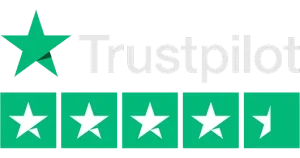As the digital realm continues to evolve, marketers are consistently introduced to powerful tools that can help brands shine. Among these tools, Pay Per Click (PPC) stands out as a game-changer. Let’s embark on a journey to understand the intricacies, benefits, and potential challenges of PPC campaigns.
What is PPC
PPC, short for Pay Per Click, is a digital marketing strategy where advertisers pay a fee each time their advertisement is clicked. Instead of earning those visits organically, you buy them. At its core, it’s a way to buy visits to your site, aiming to turn those visits into conversions.
How Does It Work?
Every time a user clicks on a PPC ad and visits the advertiser’s website, a certain fee is paid to the search engine. This fee is trivial compared to the potential profit earned from a converted customer. Thus, if PPC campaigns are set up efficiently, the ROI can be impressive.
Benefits of PPC Advertising
Why has PPC garnered so much attention in the marketing community? Here are some compelling reasons:
- Instant Traffic: Unlike SEO, which takes time, PPC can drive traffic instantly once set up.
- Targeted Advertising: Ads can be tailored for specific demographics, locations, device types, times of day, and more.
- Measurable Results: Every aspect, from clicks to conversions, can be tracked, providing a clear picture of the campaign’s success.
- Brand Exposure: PPC helps increase brand visibility as ads appear at the top of search results.
- Budget Control: Advertisers can set daily budgets and maximum bids to manage costs effectively.
Understanding the Interplay: PPC, CPC, CPM, and ROAS
In the realm of digital advertising, terminology like PPC (Pay Per Click), CPC (Cost Per Click), CPM (Cost Per Mille), and ROAS (Return On Advertising Spend) often intertwine.
At first glance, they might seem like mere jargon, but they are critical pillars holding up the structure of online marketing. PPC, a model where advertisers pay a fee for each click on their ad, often has its success measured by CPC, which quantifies the cost of each of those clicks. In contrast, CPM is about the cost an advertiser pays for a thousand impressions, offering a broader view of reach versus engagement.
The effectiveness of both strategies can be gauged by ROAS, a metric that evaluates the revenue generated for every dollar spent on advertising. Understanding the nuanced dance between these terms can unlock more efficient, profitable advertising campaigns.
Challenges and Considerations
Like all marketing strategies, PPC has its challenges:
- Complexity: While setting up a basic campaign is easy, mastering PPC platforms can be complex.
- Costs: Competitive keywords can be expensive, leading to high costs if not managed correctly.
- Continuous Management: PPC campaigns require regular adjustments and optimizations to remain effective.
- Click Fraud: Competitors or bots might click on ads to drain budgets, although platforms have protective measures in place.
Real-world PPC Success: A Case Study
In 2019, a budding e-commerce store selling handmade crafts decided to dive into PPC advertising. Their initial budget was $1,000, and their primary keyword had a CPC (Cost Per Click) of $1. With strategic optimizations and targeting, they managed 1,500 clicks, 75 of which converted into sales, each bringing a profit of $50.
Investment: $1,000
Return: $3,750 (75 x $50)
Net Profit: $2,750
This illustrates that a well-executed PPC campaign can provide an ROI that far exceeds the initial investment.
Optimizing PPC Campaigns: Best Practices
PPC success isn’t just about setting a campaign and forgetting it. Here are some optimization tips:
- Keyword Research: Continuously refine and expand your keyword list.
- Landing Page Quality: Ensure landing pages are relevant, well-designed, and have clear CTA (Call to Action) prompts.
- Adapt and Adjust: Regularly review and modify campaigns based on performance data.
- Negative Keywords: Exclude irrelevant keywords that can drain budgets without providing value.
- Ad Extensions: Use ad extensions to provide additional information and stand out in search results.
Conclusion
Pay Per Click (PPC) is a dynamic and potent tool in the digital marketer’s toolkit. While it offers immediate results, targeted reach, and measurable outcomes, it requires careful management and optimization to achieve sustained success. By understanding its intricacies and continuously refining strategies, advertisers can tap into its full potential, driving traffic, boosting brand visibility, and achieving impressive returns on investment.







